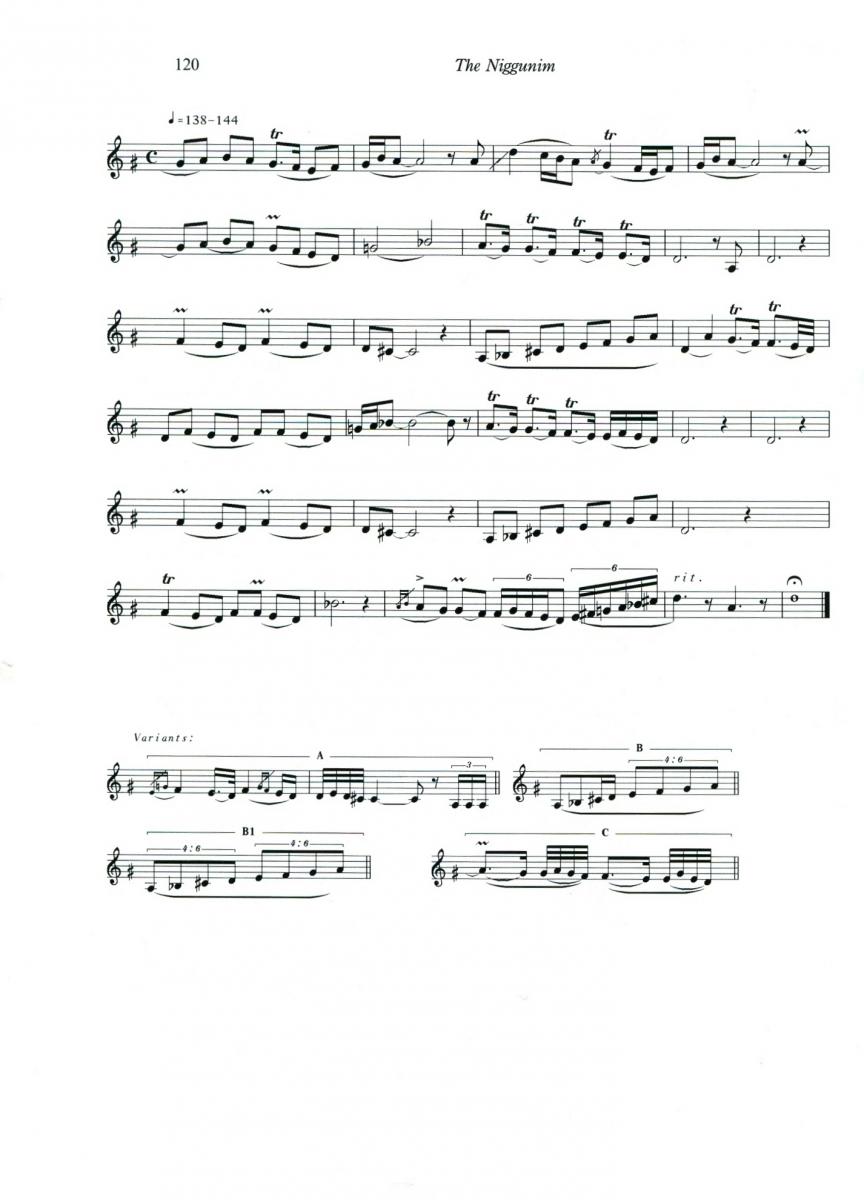Yiddish term, popularly used to refer to a joyful Niggun, and is still used as such with the Boyan Hassidim. However, some researchers see it as a 'Terminus Technicus,' a professional-scientific term that, in this case, signifies a musical genre. It seems that Freylekhs tunes comprised the core of the traditional Klezmer repertoire in Eastern Europe, and were the most popular amongst the Dance tunes. Support for this hypothesis is found in Beregovski's anthology,[1] dedicated to the Klezmer repertoire, in which out of 238 Niggunim, 74 are Freylekhs. Skutchne Niggunim, which are second in importance, appear only 41 times in the anthology. Freylekhs Niggunim, with a few alterations, were sung by Hassidim as Joyful Niggunim.[2]
Problems in the research of Freylekhs
According to Ze'ev (Walter) Feldman, a researcher of Klezmer culture and the Ashkenazi dance in Eastern Europe and in the U.S., the Freylekhs dance has a unique choreography that suits its typical duple meter but is different from other dances with a duple meter such as the Sha'ar, the Hasidl, and the Skutchne. Feldman also views the Freylekhs as a musical genre, however to define these tunes as a musical genre is problematic. This is because researchers, such as Beregovski and Stutschewsky, found it difficult to point out unique musical features of the Freylekhs when compared to the Sha'ar, the Skutchne, and the Hasidl.[3] Feldman himself [4] agreed that the four mentioned Niggunim belong to one entity. Furthermore, the attribution of generic titles such as Niggun and A Freylekher Niggun, to variants of Freylekhs tunes, and the definition of tunes with a triple meter as a Freylekhs [5] makes it even harder to identify the Freilekhs as a musical genre, rather than just a joyful Niggun, as it means in Yiddish.
The functionality of the Freylekhs Niggunim is not completely clear either. Some informants recalled the unique marches that were danced with Freylekhs Niggunim, while others, including Klezmers, remembered that the Freylekhs were used for both mass circle dances and for solo dances as well. According to some sources, including Hassidic ones, Freylekhs Niggunim were played while leading the groom, bride, or the parents-in-law, to and from the huppah, and some of them were in fact known as Tsu der Khupeh (to the huppah) and Fun der Khupeh (from the huppah),[6] to name a few.
This unclear situation is further expressed in the musical scores and CD's of the Klezmer repertoire, published in the U.S. in the twentieth century.[7] Feldman, who worked to revive the 'Ashkenazi dance,' ascribes to the Freylekhs dance several figures, some simple while others virtuosic.[8]
See also Freylekhs in the Lexicon of Klezmer Terminology (LKT).
[1] Moshe Beregovski, Jewish Instrumental Folk Music, Vol. III (М.Я.Береговский. Еврейская народная инструментальная музыка, 1987).
[2] Compare: Beregovski 2001, no. 87, published as Bukoviner Freilechs in the cd 'Zeydes un Eyniklekh', to a Habad dance tune, in Mazor-Hajdu 1974, no. 75 .
[3] Yaakov Mazor, The Klezmer Tradition in the Land of Israel, p. 45.
[4] Walter Zev Feldman, Bulgareasca/ Bulgarish/ Bulgar: the Transformation of a Klezmer Dance Genre, 7.
[5] Moshe Beregovski, Jewish Instrumental Folk Music, Vol. IV, nos. 49, 133, 140, 142 (М.Я.Береговский. Еврейская народная инструментальная музыка, 1987).
[6] Moshe Beregovski, Jewish Instrumental Folk Music, 2001, No. 15-16, 58.
[7] Yaakov Mazor, ibid, p, 45-46; an example for this: the Bukoviner Freilechs mentioned above, was titled by Kostakowsky as Hasidl in International Hebrew Wedding Music, p. 88.
[8] See: Mazor 2000, pp. 33-34.




